Eulophia speciosa
| Botanical Name | Eulophia speciosa |
|||||||||||
| Family | Orchidaceae - The orchid family. |
|||||||||||
| Pronunciation | yoo-LOH-fee-uh spee-see-OH-sa |
|||||||||||
| Common Name(s) |
English: Large Yellow Eulophia
IsiZulu: Umabelejongosi Ompofu; Umlunge Omhlophe
|
|||||||||||
| Plant Group |
|
|||||||||||
| Plant Size |
|
|||||||||||
| Position |
|
|||||||||||
| General Information |
|
|||||||||||
| Specific Information | Eulophia speciosa is a terrestrial orchid (grows in soil) with fleshy to tough, lance-shaped, semi-erect leaves that grow from pseudo bulbs. A pseudo bulb is a thickened, bulb-like, fleshy stemThe pseudo bulbs may be subterranean (underground) or partly aerial (partially exposed) and are of an irregular shape. As this plant is very widespread, it varies in structure and adaptability. Plants that come from an inland area will be able to tolerate some frost, while those originating from coastal areas are unable to to do so. It is suggested for USDA Zones 10 to 11. Although they have no nectar, the showy flowers are pollinated by carpenter bees in search of food. In South Africa the plants often grew in colonies of up to 50 plants. In a 1996 assessment it was found to be common in most parts of its distribution range in South Africa. However, in 2009 it was re-classified as declining. It is being threatened by harvesting for the medicinal trade and is also suffering habitat loss, especially along the coast. Thousands of plants have reportedly been seen at both the Johannesburg and Durban traditional medicinal markets. All orchids are protected by law in South Africa and the plants may not be removed from the wild without a permit. Only nursery-grown plants can be cultivated and legally sold. |
|||||||||||
| Ad Break | ||||||||||||
| Flowers | ||||||||||||
| Description | 10 to 30 widely spaced blooms, 25 to 45 mm in diameter, on a rather lax flower stem of 40 to 80 cm tall |
|||||||||||
| Season |
|
|||||||||||
| Colour |
|
|||||||||||
| Growth Rate |
|
|||||||||||
| Plant Uses |
|
|||||||||||
| Distribution and Habitat | coastally from the George-Knysna area of the Western Cape, through the Eastern Cape and northwards to KwaZulu-Natal and Mozambique, where it is found within a few kilometers of the coast, in sand dunes and among fynbos shrubs or grasses, often exposed to salt spray inland in Mpumalanga and Limpopo Province, as well as in Swaziland, Botswana, Namibia, Angola, the DRC, Sudan, Ethiopia and Arabia, in savanna grassland, valley bushveld, thornveld and mountain grassland vegetation, on a variety of sandy and clay soils |
|||||||||||
| Planting Suggestions | Eulophia speciosa is comparatively easy to grow but certain rules have to be strictly followed. The plants can be grown in pots or planted out in garden beds in a sunny position, taking into account the origin and therefore the suitability, of the plant. It is essential that the plants be kept fairly to very dry in the dormant period when no growth occurs as they may contract bacterial rot if watered during this time. Regular watering should only be started once the new shoots appear. Cultivated plants should be well watered when they are actively growing, in a soil mix that drains rapidly, and be allowed to dry somewhat between waterings. Water should be reduced after the new growth matures and flowering is completed, and then reduced even more after the leaves change color and drop. The simplest way to propagate the plants is by division of mature specimens in the dormant season. A layer of drainage material should be added to the bottom of the pots. The tubers should be potted or planted in garden beds at a depth of 2-3 cm in a loose mixture of leaf mould, bark pieces, river sand and garden loam, with, if possible, a small quantity of the soil in which the plants were previously growing - allowing for faster development of crucial bacteria. The tough leaves and flowering stems are little damaged by insect pests. Mole rats are known to feed on these pseudo bulbs - if you have them in your garden, rather keep your plants in pots. |
|||||||||||
| Medicinal Uses | Eulophia speciosa is used as a medicinal emetic and as a protective charm against storms. |
|||||||||||
| Ad Break | ||||||||||||


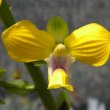
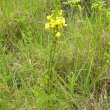
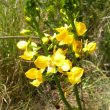
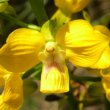
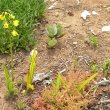


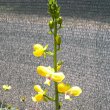


Discuss this plant
Share knowledge, ask a question or give an experience.